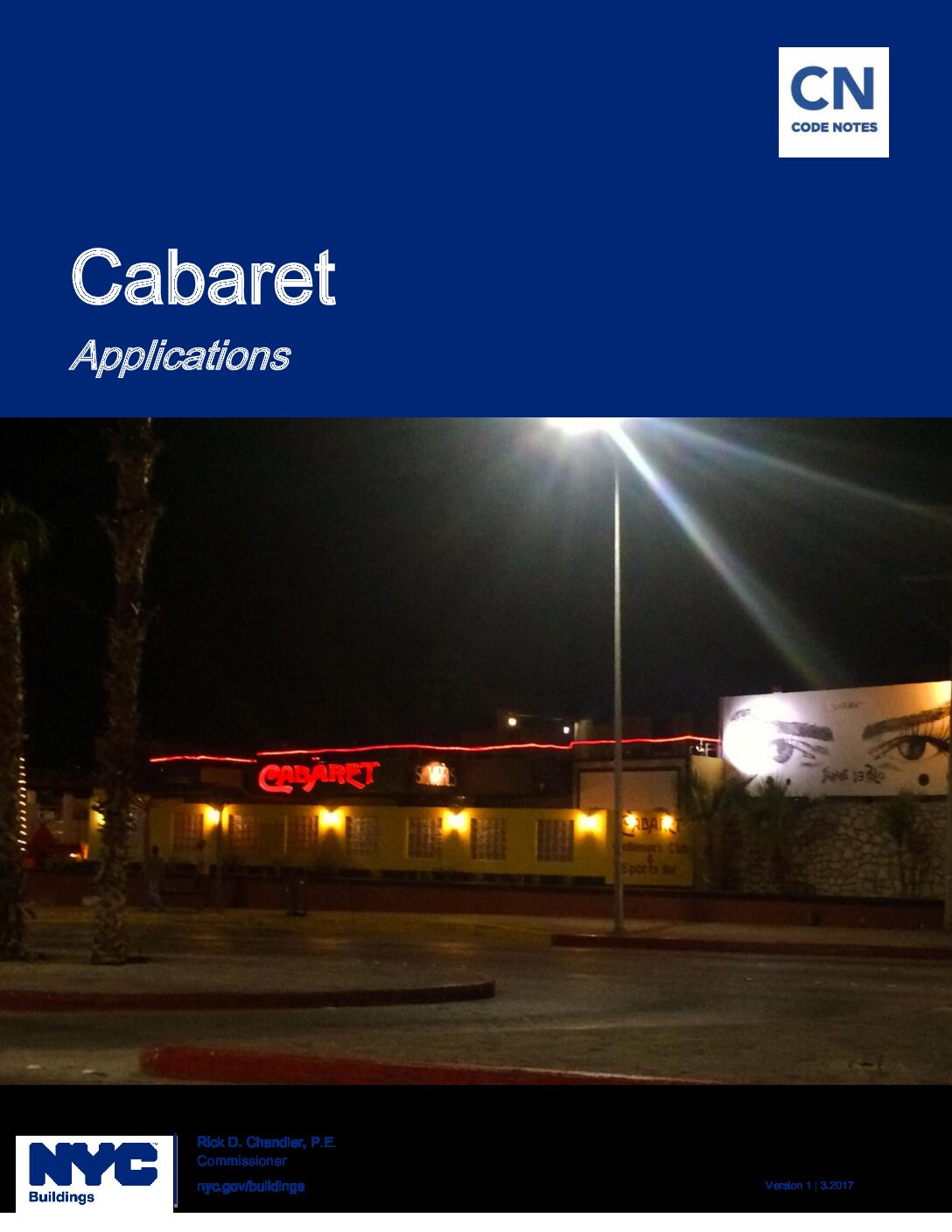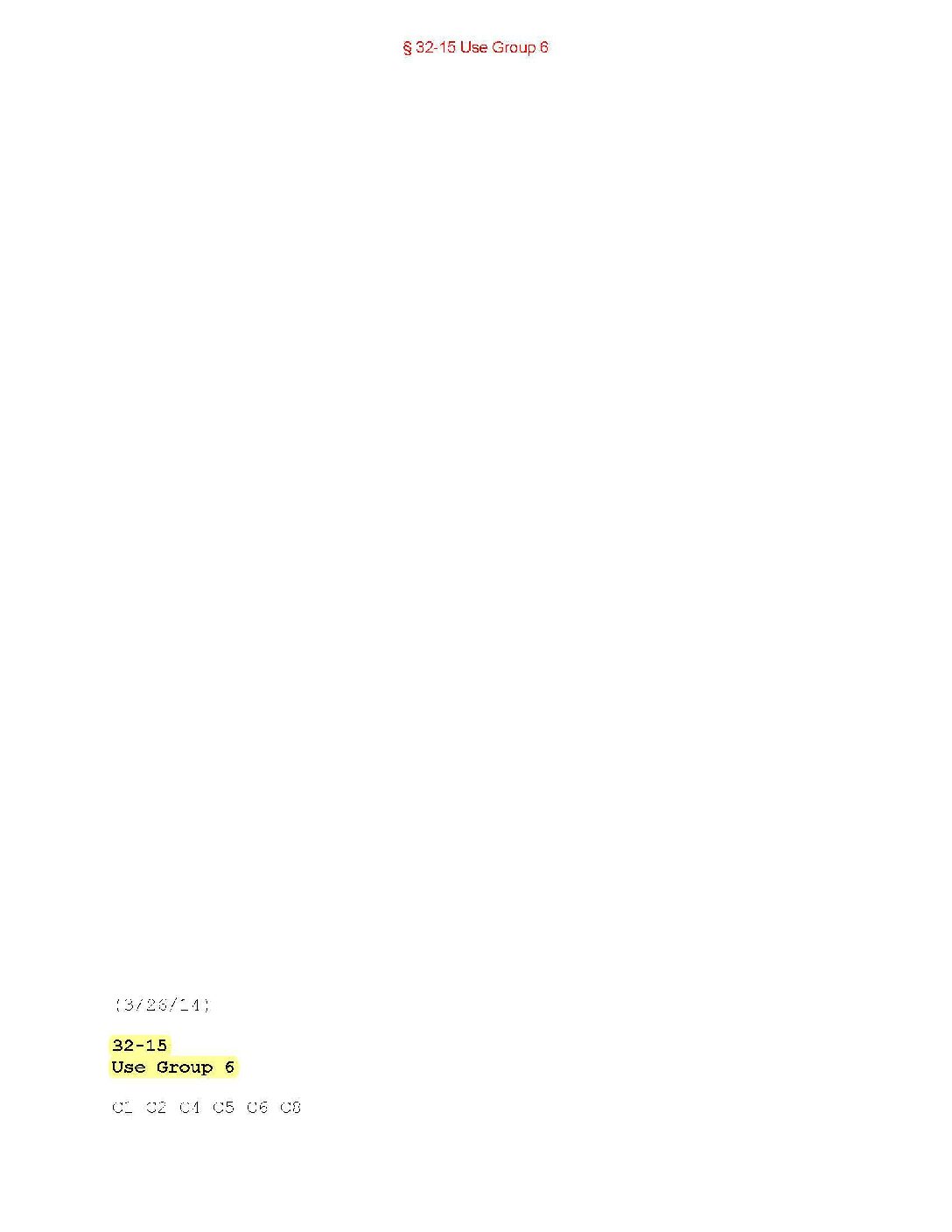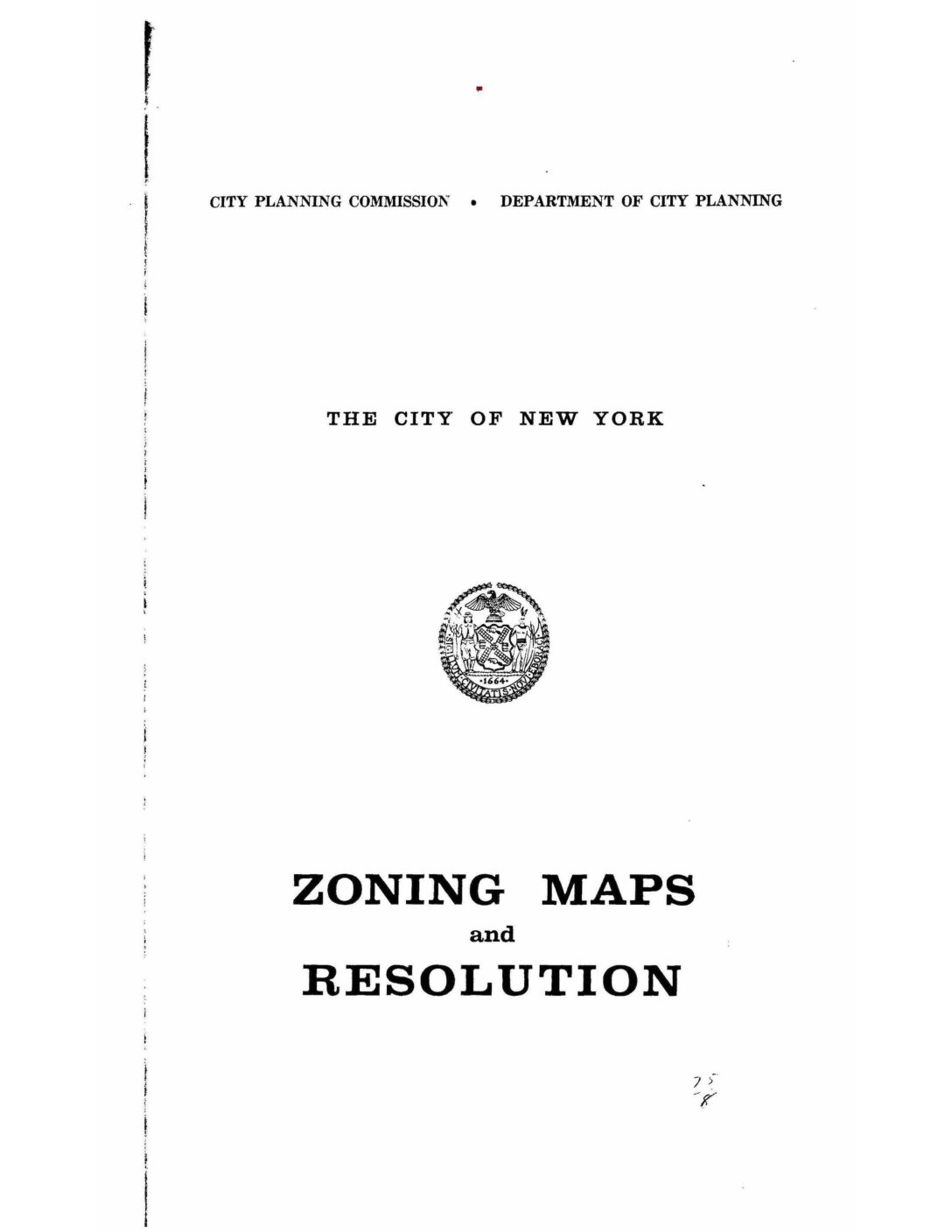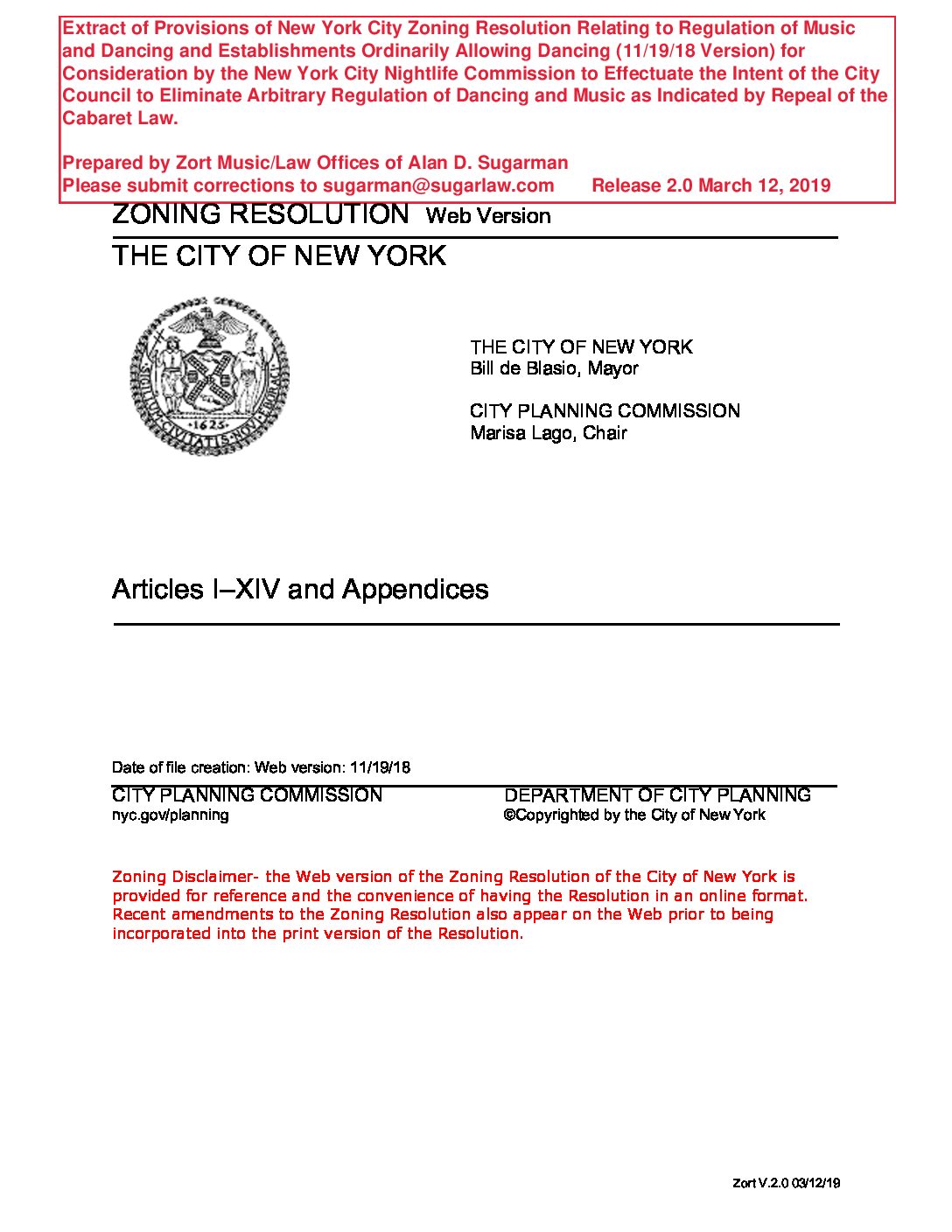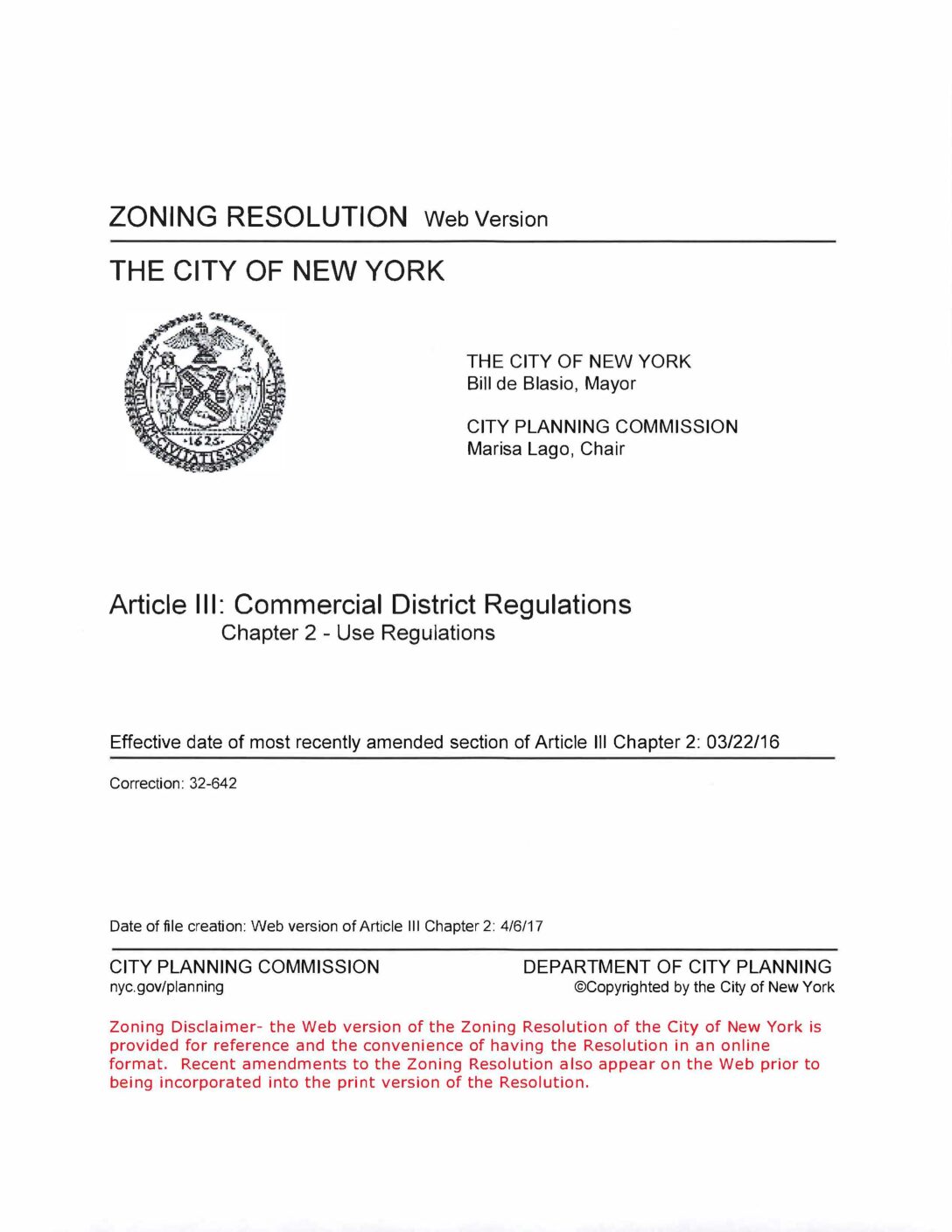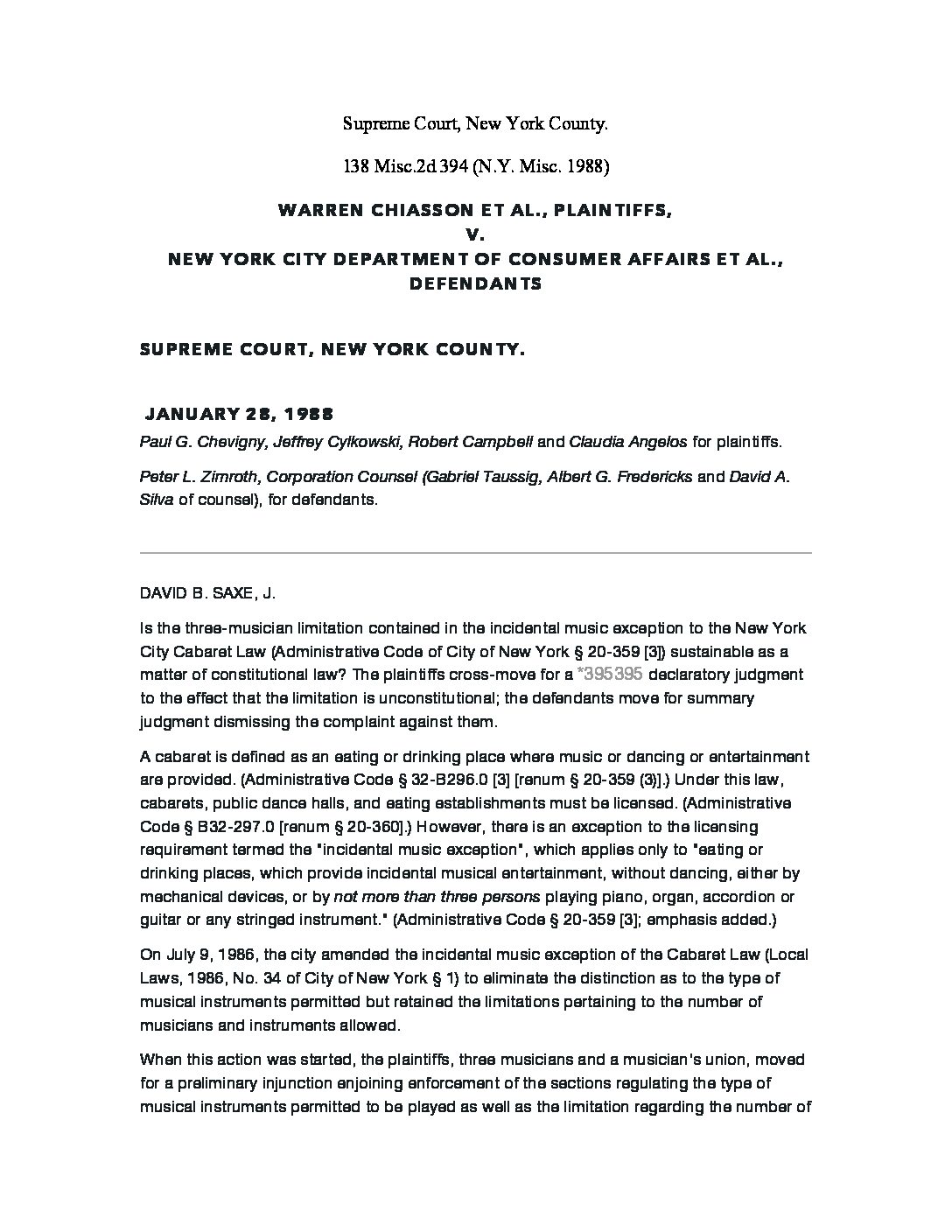The NYC Department of Buildings has failed to withdraw it Code Notes for Cabarets despite the repeal of the Cabaret Law, thereby confusing and misleading the public.
Document Category: Statutes and Regulations
Use Group 6 §32-15
Use Group 6 applies in mixed commercial-residential areas. In eating and drinking establishments, does not allow dancing or music if there is a cover charge, so that venues cannot cover the cost of hiring musicians.
1961 Zoning Resolution Use Groups – Music and Dancing
The 1961 Zoning Resolution introduced provisions allowing in Use Groups 6 and 12 musical instruments to be played without obtaining a cabaret license, limiting the number of instruments to three, and restricting the type of instruments to “piano, organ, accordion, guitar, or any string instrument.”
1926 Cabaret Law as Enacted
1926 Cabaret Law: A LOCAL LAW to regulate dance . halls and cabarets, and providing for licensing the same. Very many have opinions and views about the 1926 Cabaret Law, but never have read the law, since it is not available on databases such as Westlaw and Lexis. We obtained the text of the law here from the Archives of the City of New York. Many claim the law was racist and was aimed at black jazz venues was their mistaken belief that the 1926 Law supposedly included a restriction prohibiting drums and saxophones in cabarets. But, such a provision was not added until 1961, and was a relaxation of the law to allow stringed instruments including guitars and violins.
Zoning Resolution – Provisions Relating to Dancing and Music
The Zoning Resolution is over 3400 pages long. There are many provisions related to dancing and music which are not well known, outside of the notorious provisions banning dancing in Use Group 6 and allowing dancing in Use Group 12. We searched through the Zoning Resolution for all references to dancing and music, and provide this extract of relevant provisions. This extract was provided to the Nightlife Office and the CPC and to various City Council members.
Use Groups – Commercial District Regulations Article 3 – All Use Groups and
Prior to 2024 Zoning Resolution use group regulations including regulations of Use Group 6, 10 and 12 are found in Article III Chapter 2 Use Regulations of the Zoning Resolution.
Chiasson v. NYC Dept. of Consumer Affairs 1988
The New York Supreme Court in the second Chiasson case in 1988 held that limiting the number of musicians who can play at unlicensed establishments to three is not constitutional.
